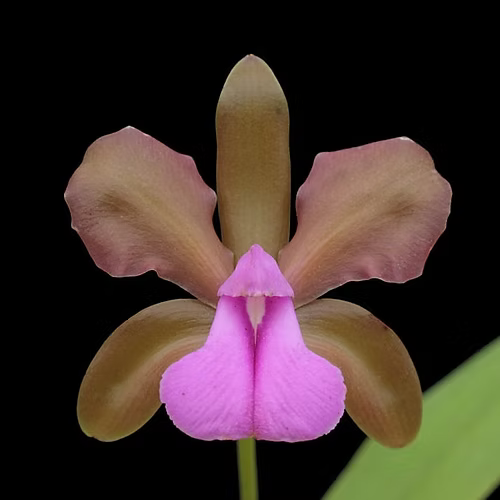Pronunciation: cat-LAY-uh
-
Light
Light is one of the most important factors for growing and flowering cattleya alliance orchids. Most can take direct light indoors in South, East, and West windows, and very bright light, sometimes direct light, in a greenhouse. Cattleya leaves should be a yellow-green (chartreuse) color when in the correct light.
Under lights, cattleya should receive 3500-5000 foot-candles of light. In a greenhouse, providing shade (giving about 50-70% full sun) will help prevent sunburn, but plants can be acclimated to direct light.
-
Temperature
Temperature is dependent on the species grown, but typically cattleya are happiest in a intermediate-warm environment between 70-85F during the day with a low of 55F at night. Seedlings should be kept slightly warmer.
Highs of up to 95F can be tolerated if the plant is shaded, has humidity, and ample water and air circulation.
-
Water
In the wild, cattleya have quick wet/dry cycles - they typically grow on the bark of branches/trees and sometimes on rocky outcrops/cliff edges so drainage and drying happen very quickly. Your cattleya will need to dry between waterings, watering when the media is just dry. In a pot, this could be a cycle of multiple days, but mounted should be watered more often especially in hot conditions.
Indoors, cattleya will do best potted. They should be watered from the top and water that is softened or hardened, or has lots of minerals, should be avoided.
A good trick I learned was to use a scale to monitor when to water a potted plant - weigh the plant in the pot just after watering. Note the weight change every day after, and when the weight loss plateaus, water the plant again.
Never use ice to water orchids!
-
Humidity
Humidity is not a critical factor to grow cattleya well, it's what makes these plants easy indoor house plants! The important factor is that there is plenty of air circulation. If the environment is more humid, increase air flow. Air movement will help to prevent bacterial and fungal infections.
-
Fertilizing
Fertilize cattleya on a regular schedule using a higher nitrogen formula (i.e. 30-10-10) at 1/4 to 1/2 the strength on the label. Give when plants are actively growing (roots and foliage). In fall, when the plants slow down active growth, reduce or even eliminate fertilizing for the remainder of the winter.
-
Repotting
Potting is necessary if the media has started to break down in the pot, especially when it is draining poorly or retaining too much moisture, or when the rhizome has started climbing out of the pot. The best time to repot a cattleya is when new roots are just starting to appear. Otherwise, wait until after flowering. The reason being because cattleya only product new roots with new growth or just after flowering (depending on species) and the roots may become damaged or shocked when being repotted which can set the plant back. When new roots are appearing, it gives the plant the best chance to establish itself in a new pot with healthy new roots. Considering that new growth and flowering typically happens one per year for cattleya, repotting at the wrong time could mean a struggling plant for multiple months, which puts it at risk of disease or dying.

